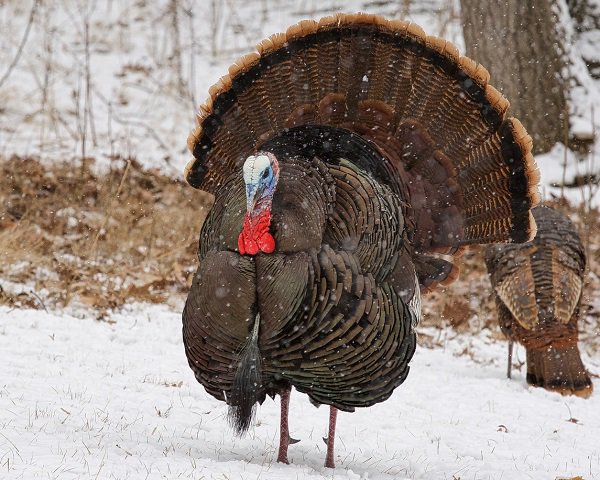The more you understand the biology of wild turkeys, the better your chances of spring gobbler success. Even though opening day is still a distant speck on the horizon, an outdoorsman can never know too much about what wild turkeys are doing, and when. Wild turkeys naturally progress through phases, from fall flock formation through the breakup and nesting in spring. Here’s a brief summary of turkey behavior from fall through winter, as provided by the National Wild Turkey Federation.
“Understanding the five phases of fall and winter flocks can help you take a wild turkey for your holiday dinner table this autumn season, and even plan for the coming spring.
1. Pre- and Early-Season Groups
Scouting flocks with fall turkey season in mind begins as springtime ends – or should. It’s a continuum for the year-round turkey hunter. Watching these game birds, then later hunting them, is an ongoing, enjoyable process.
Across the country, individual brood hens hatch their eggs, and begin raising their poults sometime in late spring or summer. Biology tells us that not all regional hatches are simultaneous. As a result, so-called early- and late-hatch turkeys may be seen in the same specific habitat. Sizes of family groups may vary.
Pre-season summer flock scouting is often low-key, but no less important than later on. Turkey hunting opportunities aren’t offered during this first phase of brood development for obvious reasons. Nevertheless, looking for newly hatched groups of birds is a worthwhile start to the hunting you plan to do that fall.
Simply spending time in areas you’ll later hunt can pay dividends. Gobbler groups, composed of mature toms and jakes, remain together after the spring breeding season – often in areas where you’ve hunted them just months before. Also, broodless hens — unsuccessful at nesting — form same-sex flocks during this time.
By early fall when seasons commence around the country, family flocks, gobbler gangs, and broodless hens have each established distinct groups. As fall turkey hunting season opens, you might see these groups together in habitats where the food source may be concentrated, or the habitat limited, or both.




